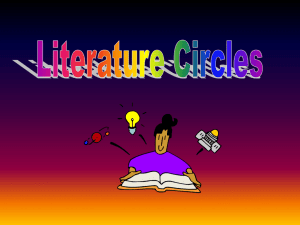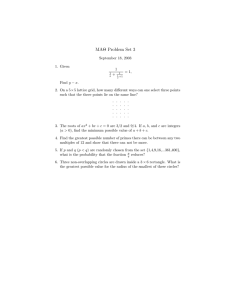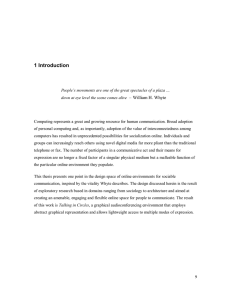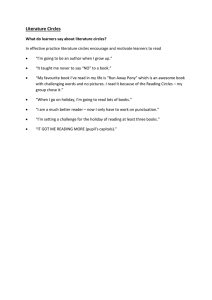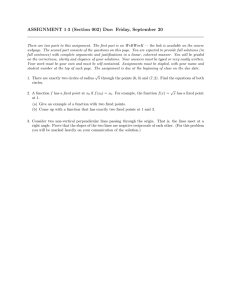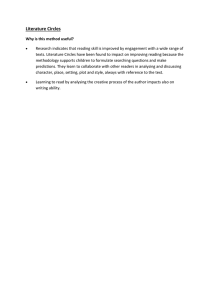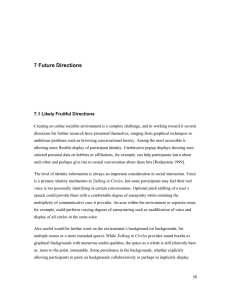6 Summary and Conclusions
advertisement
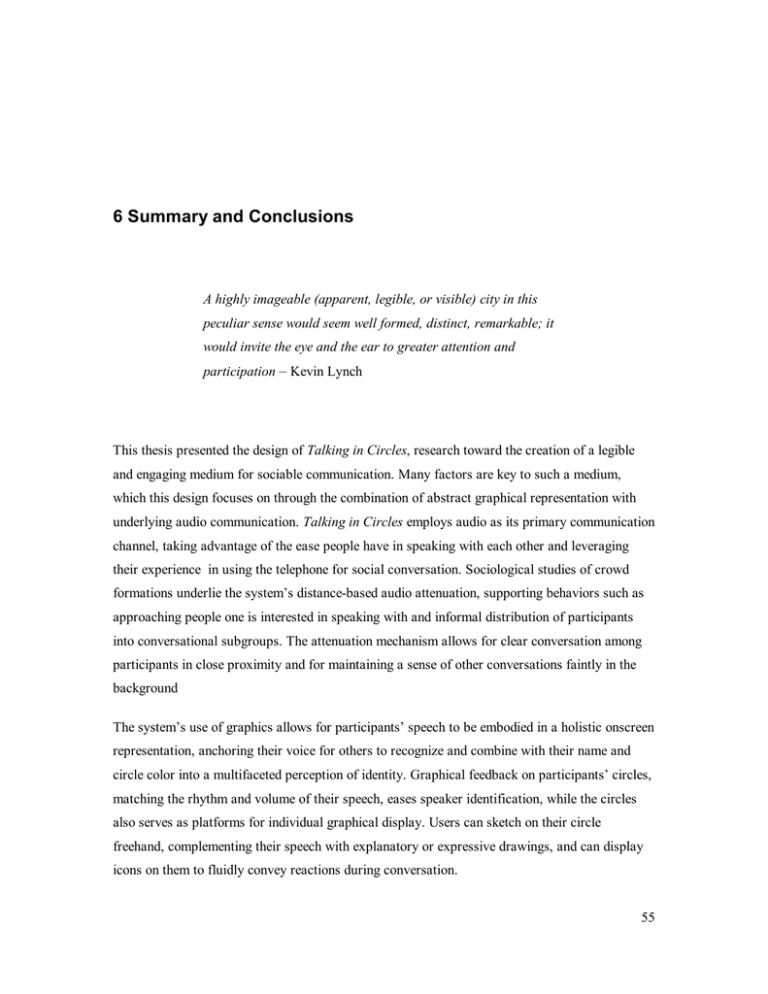
6 Summary and Conclusions A highly imageable (apparent, legible, or visible) city in this peculiar sense would seem well formed, distinct, remarkable; it would invite the eye and the ear to greater attention and participation – Kevin Lynch This thesis presented the design of Talking in Circles, research toward the creation of a legible and engaging medium for sociable communication. Many factors are key to such a medium, which this design focuses on through the combination of abstract graphical representation with underlying audio communication. Talking in Circles employs audio as its primary communication channel, taking advantage of the ease people have in speaking with each other and leveraging their experience in using the telephone for social conversation. Sociological studies of crowd formations underlie the system’s distance-based audio attenuation, supporting behaviors such as approaching people one is interested in speaking with and informal distribution of participants into conversational subgroups. The attenuation mechanism allows for clear conversation among participants in close proximity and for maintaining a sense of other conversations faintly in the background The system’s use of graphics allows for participants’speech to be embodied in a holistic onscreen representation, anchoring their voice for others to recognize and combine with their name and circle color into a multifaceted perception of identity. Graphical feedback on participants’circles, matching the rhythm and volume of their speech, eases speaker identification, while the circles also serves as platforms for individual graphical display. Users can sketch on their circle freehand, complementing their speech with explanatory or expressive drawings, and can display icons on them to fluidly convey reactions during conversation. 55 Graphics are also used to strengthen the system’s spatial grounding. As in urban plazas, different areas of the space have different functional properties supported by graphical differentiation. While most of the space has empty backgrounds and is available as quiet conversational areas, two central sound booths add flexibility and variety to the space. Users who prefer some background sound for cover, who would like to enjoy shared music while interacting with others, or who prefer another concrete information source for discussion with others, can move toward areas reached by sound from the music and news booths. Others can meanwhile observe which participants enjoy the various areas of the space, another way in which users differentiate themselves and get to know others, and can take advantage of the booths’content when engaging in conversation with strangers. Together, participants’cohesive screen representations, ability to navigate the audio space, and lightweight access to displaying drawings on their circle combine to provide Talking in Circles participants with broad support for expressiveness, or “multiplicity of cues, language variety, and the ability to infuse personal feelings and emotions into the communication” [Chalfonte 1991]. As an online environment for distributed multiparty communication, the design presented in this thesis resolves issues such as speech-source identification, comprehensive viewing of others in the space and the ability for mutual negotiation of distance with them. The system’s spatial grounding supports simple formation of conversational subgroups, and its novel emphasis on embodiment integrity preserves users’personal space while adding a subtle tangibility to motion within a crowd. User reactions to Talking in Circles have on the whole been emphatically positive. The system’s cocktail-party metaphor and functional support for it are discussed as refreshing and highly useable. The music and sound booths are considered by users an important aspect of the system due to their augmenting the variety of available settings within the system as well as being interactive, dynamic sources of information and entertainment. Above all, users favor the cohesive system design and the easy access to multiple communicative modalities, which make for a lively space with interesting, observable activity. The most-cited problem is performance, such as reduced responsiveness when a number of participants are highly active at once. Nevertheless, the implementation has given rise to multimodal behaviors combining motion, speech and drawing. The research presented in this thesis, embodied in the design of the Talking in Circles graphical audioconferencing environment, its implementation and user observations, support the literature’s 56 broad findings on the flexibility and richness of human speech for communication. Further, this work exemplifies the great potential in the combination of speech communication with interactive graphics, and illustrates challenges and successes in carrying a multifaceted design based on social factors to fruitful implementation. Chapter 7 now looks at research directions likely to further inform the design of sociable communication online. 57
